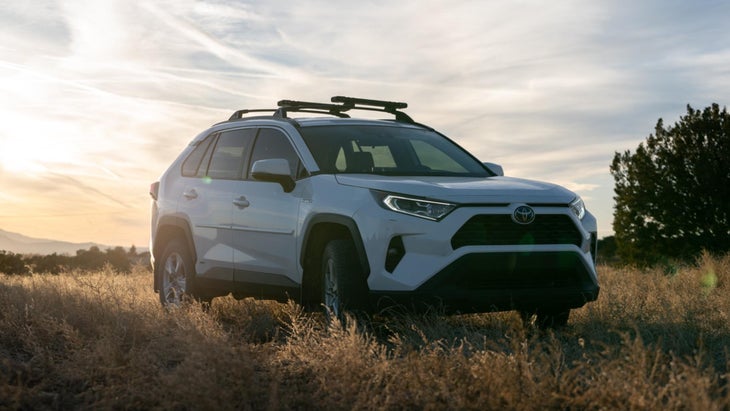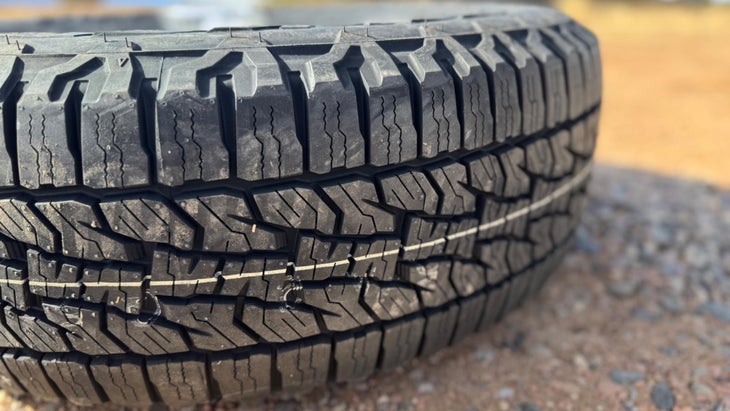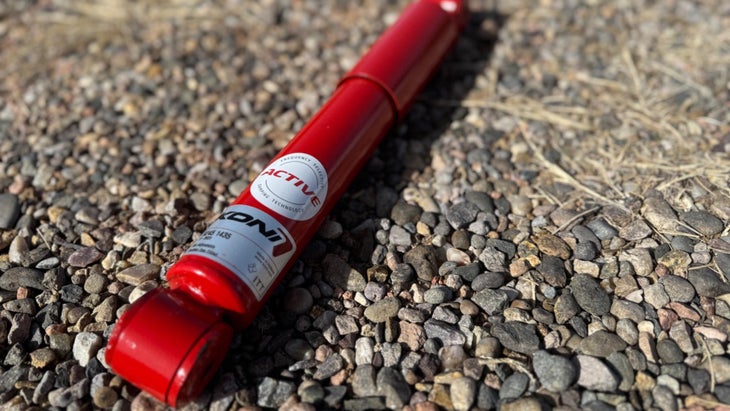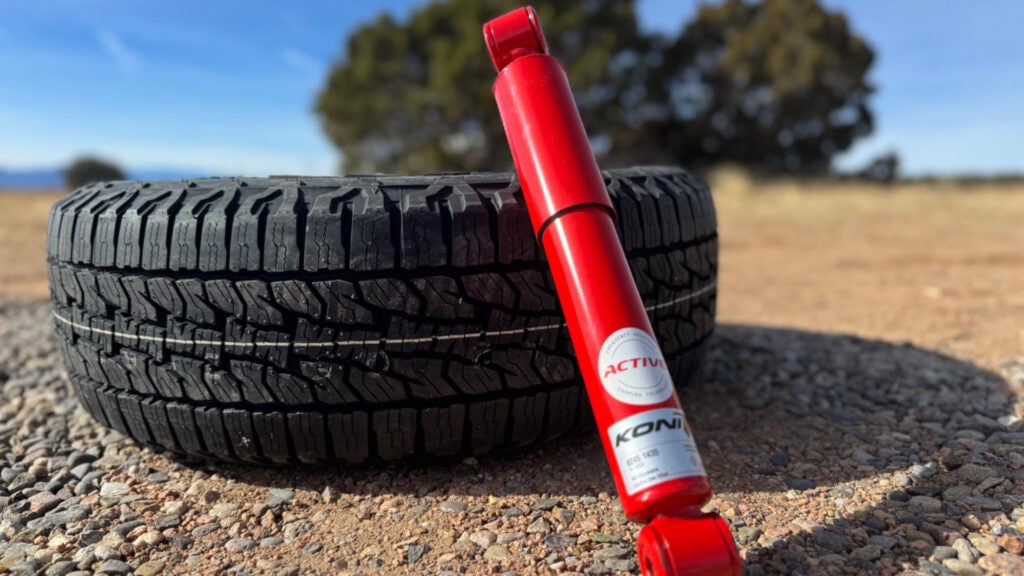No products in the cart.
Outdoor Adventure
How to Make Your RAV4 Or Other Crossover Off-Road Capable
Despite being the most popular segment of vehicles in the U.S., crossovers like the Toyota RAV4 and Honda CRV get a bad rap, especially in the off road and overland communities. They’re regarded as a poor compromise between a sedan and an SUV that tend to do nothing particularly well, and are often ridiculed for selling the idea of off-road capability without actually possessing that capability.
Here’s the thing, though: crossovers are popular for good reason. They meet the needs of most people incredibly well, are fuel efficient and comfortable, and with modern all-wheel-drive systems and traction control, I’d argue they’re able to get most of us pretty much anywhere we actually want to go.
My wife and I own a 2021 Toyota RAV4 Hybrid, which happens to be the most popular crossover in the U.S. and is one of the best-selling vehicles in the country year after year. It has been a phenomenal car for us, but we wanted to make it perform a bit better off-road, so we made some modifications.

How “Off-Road” Are You Really Getting?
Before I dive into what we did to our RAV4, let’s take a second to talk about what “off-road” and “off-road capability” really mean. For some folks, off-road capability might mean their vehicle needs to come equipped with large tires, front and rear locking differentials, a winch, and the ability to safely navigate a Class 6 trail in Moab, Utah.
If that’s what you need out of a vehicle, then yeah, a crossover isn’t for you.
The thing about those types of trails is that you have to seek them out—there are not many of them, and most folks are not running trails in Moab very often. To most people, “off-road” really just means driving off pavement, usually to get to a trailhead or campsite—and for that, a crossover is more than enough, especially with a few simple modifications.
What Not to Do
There’s been a trend of people modifying their crossovers similarly to how one might modify a four-wheel-drive truck or SUV like a 4Runner: adding big, knobby tires, lift kits, rock sliders, heavy duty front bumpers, winches, and more.
Bolting all that stuff to your car might make it look cool, but it also affects the ride and your fuel economy. Here’s what I did to modify my crossover to make it more capable without ruining the way it drives.
Tires

The number one thing I recommend to anyone looking to give their crossover more capability is upgrading the tires. The first thing we did to our RAV4 when we bought it was swap the stock tires with a set of Falken Wildpeak AT Trails (from $150 per tire). They’re an all-terrain tire specifically designed for lighter duty vehicles like crossovers. So, unlike fitting a traditional all-terrain tire designed for a truck or heavier SUV, these won’t ruin a crossover’s fuel economy or create an unnecessarily harsh ride.
What they will do is give your rig a lot more traction on dirt roads and slippery surfaces, like mud and snow, than the highway tires that are stock on crossovers, thanks to a more aggressive tread pattern. They’re also severe-snow rated, and while not as good as a true winter tire, we’ve found them to work very well in the snow. We just put another set on the RAV4 after over 50,000 trouble-free miles on the first set. We’ve taken the RAV4 on many adventures along dirt roads and haven’t had a flat yet.
If you want to use your crossover to get to a remote trailhead or gain some confidence in slippery terrain, I highly recommend investing in aftermarket all-terrain tires specifically designed for crossovers.
Recovery Points and Gear
Next, we added a receiver hitch. We don’t plan to do any towing with the RAV4, but we do want to be able to use a hitch-mounted bike rack and, more importantly, add a proper recovery point in case we get stuck.
You might think that requires a trip to the dealership, but if you’re even mildly handy, you can easily add an aftermarket hitch yourself with a socket set. I went with a Torklift Ecohitch ($375) for the RAV4 because it’s one of the lowest profile hitches on the market for crossovers, but still uses a 2-inch receiver (it also costs hundreds less than the factory Toyota option).
Most trucks and SUVs use a 2-inch receiver, so in our case, the bike rack and cargo rack we use on our Tundra fits the RAV4 without issue or adapters. Torklift is also a brand I’ve used in the past for things like truck camper tie-downs, hitches for travel trailers, and more, and I’ve always been impressed with the quality of their products.
The Ecohitch doesn’t require drilling, and, it took me about an hour to mount it. As for the actual recovery point, we carry a 2-inch Shackle Hitch Receiver ($47) and a Kinetic Recovery Rope ($75) in our car. The shackle receiver slots into the RAV4’s hitch and provides a secure attachment point for the recovery rope.
We also got another, dedicated set of MaxTrax mini recovery boards ($180) for the RAV4. Rather than mounting a set of the larger MaxTrax to the roof of the car like we do on the truck, we opted for the Minis and a carry bag. They’re a better size for the RAV4, and the carry bag lets us toss them in the back if we know we might be in a situation where we’ll need them, like a camping trip or heading up to the ski area for the day.
Suspension

One of our only complaints about the RAV4 has been the ride on rougher dirt roads. Ours is a Hybrid XLE model, so presumably Toyota meant for this thing to spend the majority of its time on pavement, and they specced the shocks accordingly. It rides nicely on the highway, but it’s uncomfortably stiff on dirt roads, and any sort of pothole or larger dip feels like you’re riding a pogo stick. Some online research revealed this as a common complaint, and I noticed Toyota specs different shocks on its Woodlands and TRD Off Road RAV4 models.
When I looked for a suitable upgrade, everything I came across was part of a lift kit and specifically designed to give the vehicle more clearance. I wasn’t interested in lifting the RAV4 since there are a lot of downsides to lifting a small vehicle with independent suspension and limited suspension travel. We’ve also found the RAV4 to have ample clearance for what we do.
That’s when I found Koni. I came across the brand while researching suspension options for our new camper van (more on that in an upcoming article), and realized they make dampers for the RAV4, too. Koni is based in Holland, and while they’re somewhat of a new name in the U.S. overland market, they made a name for themselves in the heavy truck off-road racing world long ago.
Their line of Special Active shocks features what Koni calls “FSD” or Frequency Selective Damping. In a nutshell, the shocks use low damping forces when the vehicle is traveling in a high frequency environment, like on long stretches of smooth road, but use high damping forces when traveling in a low frequency area like a road with a lot of bumps or sharp corners. It’s a simple design that doesn’t require any adjustment on the part of the driver, but works wonders to smooth out the ride on rougher roads.
These shocks have made a massive difference in how the car handles on rougher dirt roads. Washboard is significantly more comfortable, as are larger bumps and potholes on pavement. On-road driving feels about the same, with perhaps less body roll than before—our RAV4 hasn’t turned into a desert racing machine, but getting to the trailhead is now a lot more pleasant.
Less Is More
The list of modifications we made isn’t long, and it might not seem like much of an adventure rig “build,” but that’s the point. As the old saying goes—if it ain’t broke, don’t fix it. A crossover like our RAV4 is already great at doing a lot of things, like daily driving duties, light dirt road touring, road trips, and more.
The only other modification I’m considering is adding a front skid plate from LP Adventure for more protection from rocks and other obstacles you’re likely to encounter off-road. I think adding skid plates is a much better idea than adding a lift for more clearance, and LP Adventure is a great source for things like skid plates, bumper guards, wheels, and tires for crossovers.
The improved ride, along with better tires and a dedicated recovery point in the form of a hitch, have significantly improved the capability of our little RAV4. It’s not—and never will be—a Jeep Wrangler or a Toyota Tacoma, but for 90 percent of the driving we do, it works just fine.
Source link

